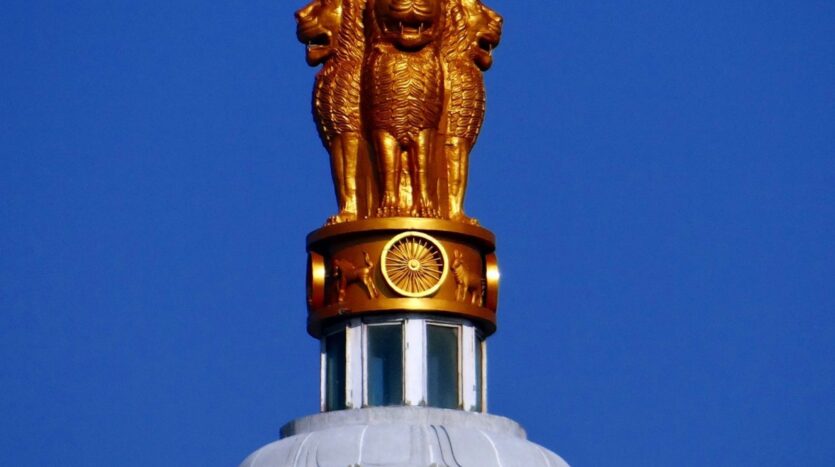Sarnath Lion Statue: The Majestic Sarnath Lion Statue
Sarnath, a small town located near Varanasi in the northern Indian state of Uttar Pradesh, holds a special place in the hearts of millions of Indians and Buddhists worldwide. This serene and historically significant place is not only known for its spiritual significance but also for its rich cultural heritage. Among the many treasures it houses, the Sarnath Lion Statue stands as a symbol of India’s glorious past and its deep-rooted connection with Buddhism. In this blog, we will delve into the history, significance, and cultural importance of the Sarnath Lion Statue.
A Brief History of Sarnath
Sarnath’s history dates back over two millennia and is deeply intertwined with the life and teachings of Siddhartha Gautama, who later became the Buddha. It was at Sarnath that the Buddha delivered his first sermon, known as the Dhammacakkappavattana Sutta, to a group of five ascetics. This sermon marked the beginning of the spread of Buddhism, and Sarnath became one of the four holy sites associated with the Buddha’s life.
The Sarnath Lion Capital: An Iconic Symbol
The Sarnath Lion Capital, also known as the Ashoka Pillar, is an iconic symbol of Sarnath and Indian history. It was originally erected by Emperor Ashoka in the 3rd century BCE during his reign over the Maurya Empire. This intricately carved sandstone pillar stands at an impressive height of over seven meters and is adorned with four majestic lions, each facing one of the cardinal directions.
The lion is a significant symbol in Buddhism, representing the Buddha’s royal lineage as he was often referred to as the “Sakya Lion.” The four lions atop the Sarnath pillar are carved with remarkable attention to detail, displaying their majestic manes and serene expressions. The lions rest on a circular abacus, which is decorated with a frieze of four wheels, also known as the Dharma Chakras. These wheels symbolize the Buddha’s first sermon at Sarnath, during which he set the Wheel of Dharma in motion, imparting his teachings to the world.
The Importance of the Sarnath Lion Statue
- Historical Significance: The Sarnath Lion Capital is not only a symbol of Buddhism but also a testament to Emperor Ashoka’s embrace of the Buddha’s teachings. Ashoka, one of the most prominent rulers in Indian history, was initially a ruthless conqueror. However, after witnessing the brutality of war, he converted to Buddhism and adopted the principles of non-violence and compassion. The erection of the Sarnath pillar marked his commitment to spreading Buddhism and promoting a more ethical and peaceful way of life.
- Architectural Marvel: The Sarnath Lion Capital is a remarkable architectural achievement of its time. Its precision and craftsmanship showcase the artistic excellence of the Mauryan period. The detailed carvings on the lions, wheels, and other motifs on the pillar are a testament to the skill of the artisans of that era.
- Cultural and Religious Significance: For Buddhists worldwide, Sarnath is a sacred pilgrimage site, and the Lion Capital serves as an emblem of their faith. Pilgrims and tourists visit Sarnath from all corners of the globe to pay their respects to the Buddha and to admire this ancient masterpiece.
- National Emblem of India: The Sarnath Lion Capital has transcended its religious significance to become an emblem of India itself. The four lions from the capital, standing back to back, were adopted as the official emblem of the Republic of India in 1950. This emblem, known as the Ashoka Chakra, can be found on the Indian national flag and various government insignia, emphasizing the nation’s commitment to principles of truth, righteousness, and non-violence.
Preservation and Legacy
Preserving the Sarnath Lion Statue is of paramount importance. Over the centuries, this ancient masterpiece has weathered the effects of time and human intervention. The Archaeological Survey of India (ASI) and other organizations have undertaken significant restoration and conservation efforts to ensure that this symbol of India’s heritage remains intact for future generations.
Conclusion
The Sarnath Lion Statue is not merely a stone structure; it is a living testament to India’s rich history, spirituality, and cultural diversity. Its presence in Sarnath continues to inspire people from all walks of life, reminding us of the importance of embracing wisdom, compassion, and non-violence in our daily lives.
As we gaze upon the majestic lions atop the Ashoka Pillar, we are reminded of the enduring legacy of the Buddha’s teachings and the profound impact of Emperor Ashoka’s conversion to Buddhism. The Sarnath Lion Capital stands as a timeless symbol of India’s glorious past and its enduring commitment to the principles of peace and enlightenment.




